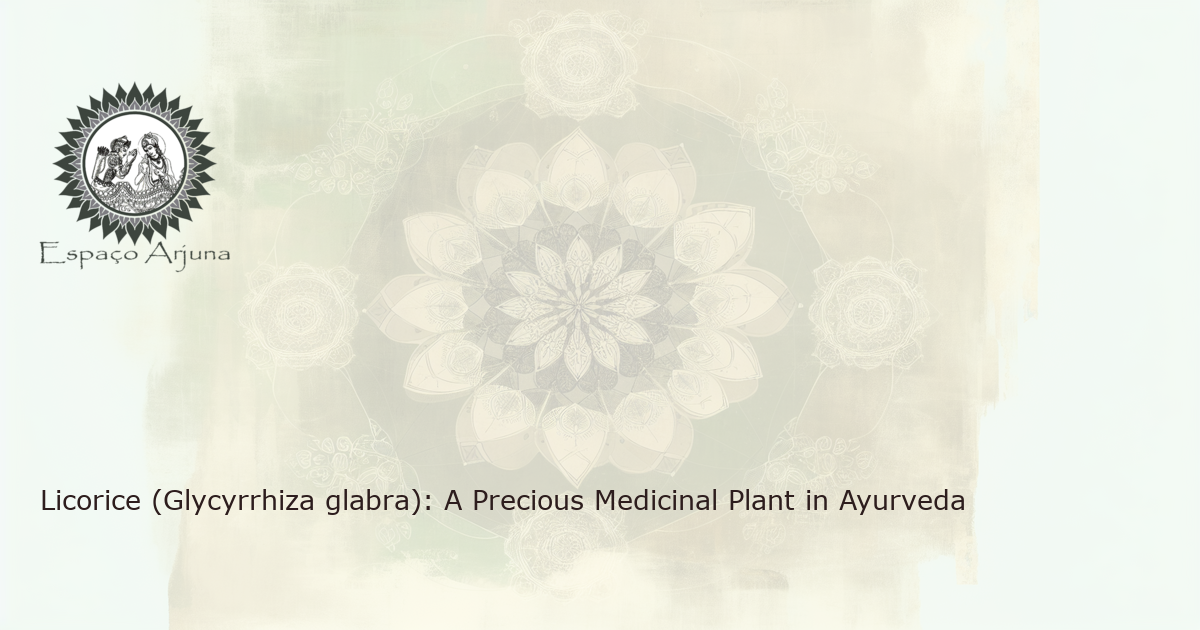Licorice (Glycyrrhiza glabra)
In Sanskrit, Licorice is known as Yashtimadhu (यष्टिमधु), a gem in the crown of Ayurvedic medicinal plants. Scientific Name: Glycyrrhiza glabra. Common Name: Licorice or Liquorice.
Sapta Padartha Vijnana
Licorice, from the perspective of sapta padartha vijnana, manifests as:
- Rasa (ऋस): Madhura (Sweet)
- Guna (गुण): Snigdha (Oily), Guru (heavy)
- Virya (वीर्य): Sheeta (cool)
- Vipaka (विपागाभ): Madhura (sweet)
- Karma (कर्म): Vata-Pitta Shamaka (alleviates Vata and Pitta), expectorant, anti-inflammatory, mild laxative, tonic
Indications, Contraindications, Safety Aspects, and Combinations
Licorice has a vast range of therapeutic applications: it’s beneficial for digestive tract disorders, respiratory diseases, hormonal imbalances, skin conditions among others. Contraindications include hypertension, edema, kidney failure and advanced liver disease. Proper dosage should always be adhered to and the guidance of a Ayurvedic professional should be sought before usage. Licorice mixes well with other herbs, amplifying their therapeutic effects, such as ginger for respiratory disorders, amla for skin conditions, and shatavari for hormonal imbalances.
Dosage and Usage Forms
Licorice can be used in various forms: capsules, churna (powder), tincture, decoction and even as an infusion for gargling. The dosage, as per Charaka Samhita, can range from 1 to 10 g/day depending on the nature and severity of the disease.
To further understand the properties of Licorice, sign up to one of our courses about Ayurveda at Espaço Arjuna.





